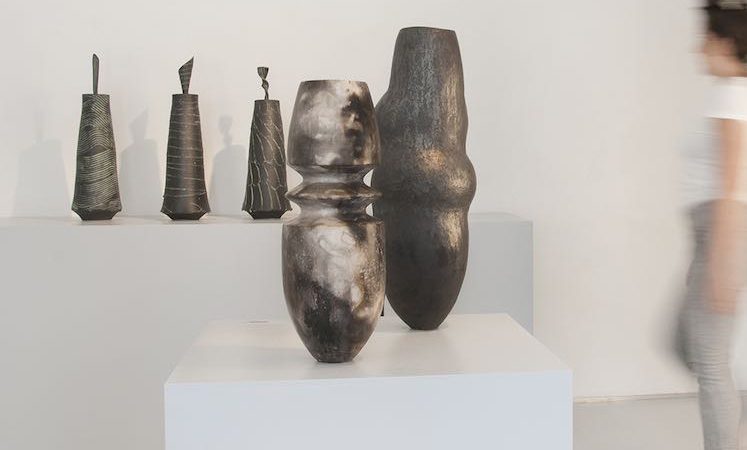Curator: Tirza Yalon Kolton
Exhibition Design: Etai Ohaly
Opening: Thursday 27 August 2015 at 19:30
Closing: Saturday 10 October 2015 at 14:00
Artists
Big Jars: Irit Abba, Udi Even Belinki, Meira Una, Dodi Eldar, Ester Beck, Shahaf Givon, Rani Gilat, Felicity Bernstein Yakoby, Alon Gil, Lidia Zavadsky, Gil and Michal Jaure, Avner Zinger, Nitza Yafe, Ahia Canna, Jean Myer, Meir Moheban, Roy Mayan, Eli Sklar, Yael Atzmony, Udi Charka, Jacaranda Kori, Leah Krugman, Moshe Shek
Small Jars: Avital Avital, SImha Even Chen, Michal Alon, Sara Ben Yosef, Nitza Bar, Guy Jana, Dima Gurevitch, Eti Goren, Yael Gorfinkel Pasternak, Shamai Gibsh, Zahara Harel, Raya Hizi, Ran Hazak, Nahum Tebeski, Ronen Yamin, Doron Yakovy, Anna Carmi, Nezer and Shelly Luria, Lilian Landau, Shulamit Teiblum Miller, Yael Novak, Svetlana Feirman, Miri Fleisher, Itamar Siani, Adina Solmonovitch, Ruti Simon, Amnon Amos, Ronit Zor, Jorge Kareliak, Amiela Runkan, Leah Sheves, Raya Stern
About the Exhibition:
Jars, originally made for storage, are vessels that contain culture. Even though they have lost their original use, they have not disappeared from our living space and their presence as an object is embedded in the DNA of human culture. Jars were used in the past for storing food (wine and wheat) and collecting water, a symbol of life as well as for the end of life – urns that store ashes in certain cultures.
For ceramists the jar is a kind of canvas, a round generic surface available for self expression using material, drawing or color. From the very first clay pots found 18000 years ago, all through ancient cultures such as India, China, Japan, Central America, Africa, Egypt, Greece and up to Bernard Leach, Shoji Hamada, Peter Voulkos and Greyson Perry, the jar has always been used for expression, creating a visual and material language, making a statement, criticism and decoration.
Through time the jar has been given anthropomorphic qualities and is described with human parts such as: the foot (on which it stands) the belly (the bulge), the shoulder (inward turn of the pot), the neck (narrow upper part), ears (handles) and the lip (the upper edge).
The connection between the viewer and the pot extends the relationship of the work of art. The vessel can be viewed from a distance and yet it calls for closer and intimate examination. The concept of body / spectator led us to the special installation of this exhibition. The visitor to Beside a Jar will not estranged from the work, but be invited to sit next to it, to touch, to feel, to experience and to spend time in its presence. And so this exhibition will re-evaluate the relationship between viewer – object – space.
Beside A Jar is a tribute to the jars made by ceramists in Israel, some of them made by local artists who had a profound influence on the establishment of the identity of Israeli ceramics (Jean Meyer, Moshe Shek, Lidia Zavadsky, Udi Even Belinki) and the contemporary potters active today.

